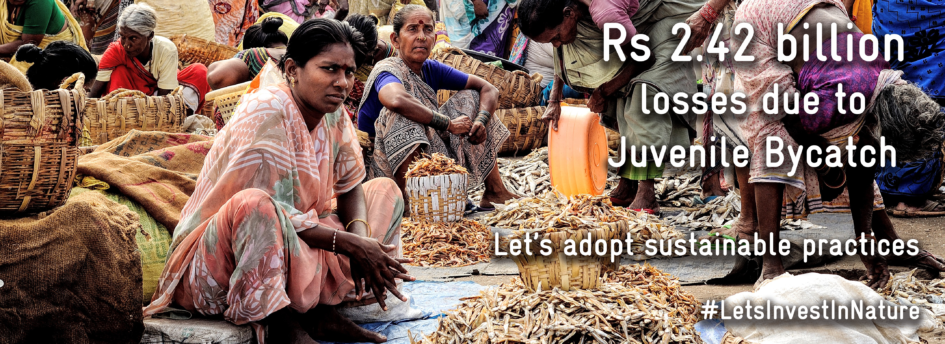Shubhangi Singh: Technology might be man’s biggest achievement. It may also be of man’s greatest concern. Large-scale machines have proven to industrialise production thus, multiplying benefits by many folds but these mass encounters can also be hazardous to small beings that are callously washed along with this giant cog and it’s wheel of large-scale production.
Fishing Trawlers are symbols of modern day industrial scale fishing. These machines that catch fishes in huge numbers are said to be a boon to the sector’s economy but a closer look at the figures show that these modes of mass fishing may not be as efficient as they may seem to appear. While casting the net for lucrative catch, trapped within the trawler’s nets are thousands of juvenile fishes and other marine species. These are collectively called Bycatch. Commercial fishing affects not only the species targeted, but also several other species that are caught in the nets incidentally, but the loss of this Bycatch from their watery homes may result is serious damage to marine biodiversity. What is considered redundant Bycatch are, infact, important water creatures like juvenile fish, clams and shrimps as well as other marine species that have key role to play within their co-dependent eco-systems but that are instead forced out of their environment.
Researchers studied Bycatch on the coast of Andhra Pradesh in India to understand the true economic implication of this mass unintentional fishing. The study showed that as much as nearly 60% of the total biomass brought in by the trawlers is forgone due to it being juvenile catch— which is of very little revenue for the fishers in the markets. And when the juveniles are not given an opportunity to grow to adulthood and to eventually breed, it has a huge impact on future population of the species as well on the inter-dependent ecosystem. This unintended mass Bycatch is a colossal waste since the catch has little to no commercial value and is often sold cheap to the fishmeal and poultry industries. Add to this the future loss due to death of juveniles and the figure is staggering. Bycatch is hurting both— the economy and the environment.
Bycatch from trawlers is of great concern worldwide and extensive studies are carried out to understand its impact on the structure of marine communities and/or the ecosystems. To reverse these losses, fishermen should be made aware of the consequences of unsustainable fishing in terms of livelihood loss and unintended consequences to marine biodiversity. To achieve the goal of sustainable fishing, incentivising the use of technologies that save juvenile fish and other Bycatch could help minimise the losses. Further, by implementing fishing holidays or ‘no-take zones’ would certainly encourage conservation and help replenish the fish population. These actions would, in turn, help the fishing sectors flourish by providing sustainability for longer while co-existing with other inter-dependent species within the ecosystem.
Trawling has acquired the status of an industry with incorporation of the state of art technological advancements, in terms of more speed, higher capacity and fish finding equipment; this makes the numerous trawlers that go into the seas, en masse, even more dangerous to the marine life. By working towards minimising these environmentally and economically deteriorating practices, revenues can be fortified for longer, making it better for all parties involved — and that is a proposition to be considered very seriously.

